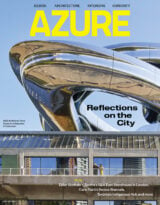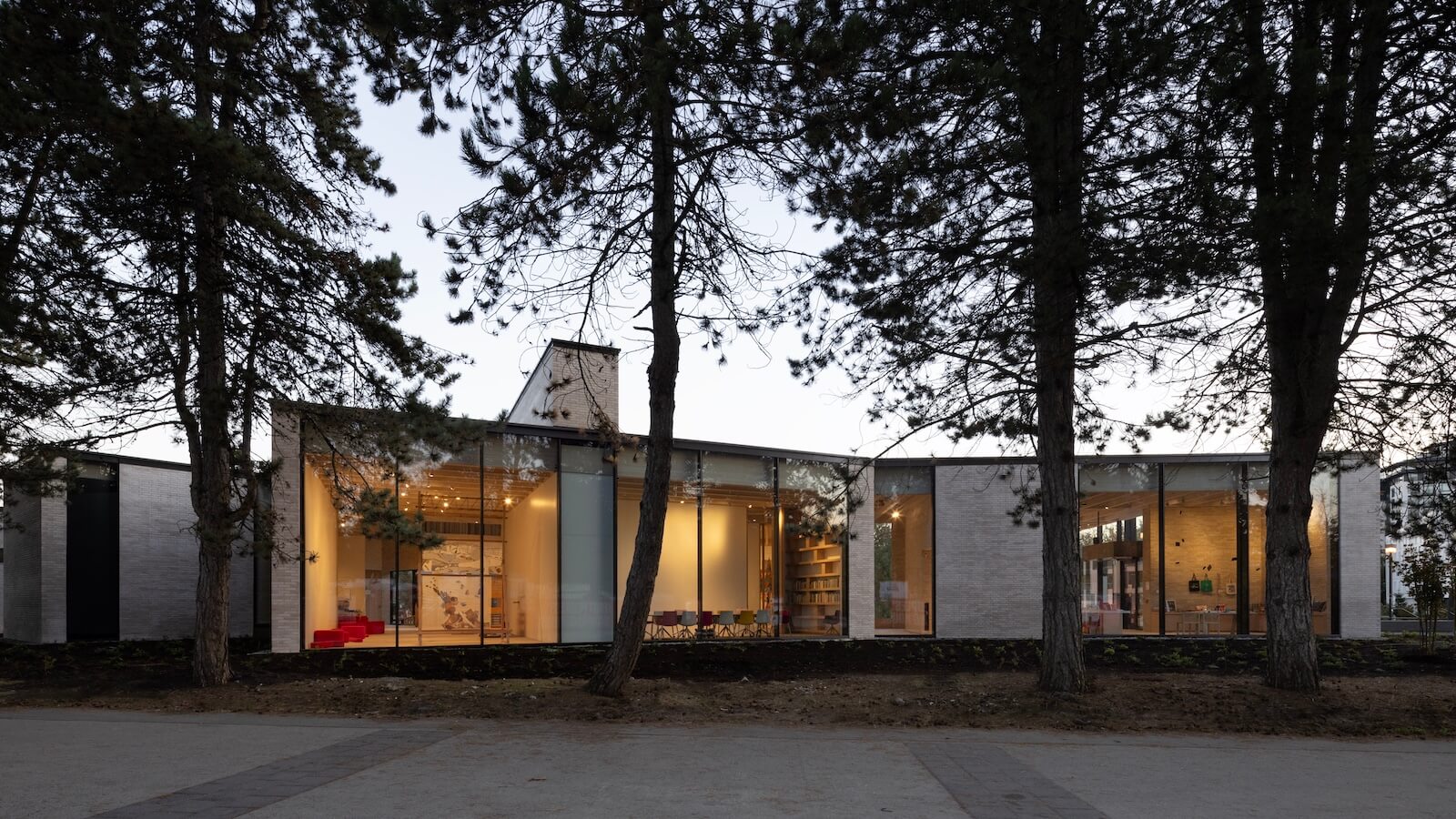
The Marianne and Edward Gibson Art Museum is an act of remediation and healing. Placed at the eastern gateway to Simon Fraser University’s (SFU) Burnaby campus in British Columbia, the new cultural hub sits alongside the school’s recently completed First People’s Gathering House at the end of the ceremonial walkway. Replacing a former parking lot, the project rekindles the mountain’s original forested state via a new grove of native alder trees that will repair the land, celebrating — and restoring — the site’s Indigenous heritage, all while honouring the soulful, heroic horizontality of Arthur Erickson’s legendary campus.
Toronto’s Hariri Pontarini Architects have created a porous, welcoming and inclusive new building, contoured around greenery. Designed with Vancouver-based Iredale as architects of record, the 1,300-square-metre museum is named for a beloved professor who was the director of the SFU Gallery from 1986 to 1997 and his wife, a collector and educator. The new, admission-free institution is conceived as a legible and intuitive single-level space, welcoming students, art lovers and neighbours alike from both the campus to its west and the burgeoning residential community — and transit hub — immediately to its east.
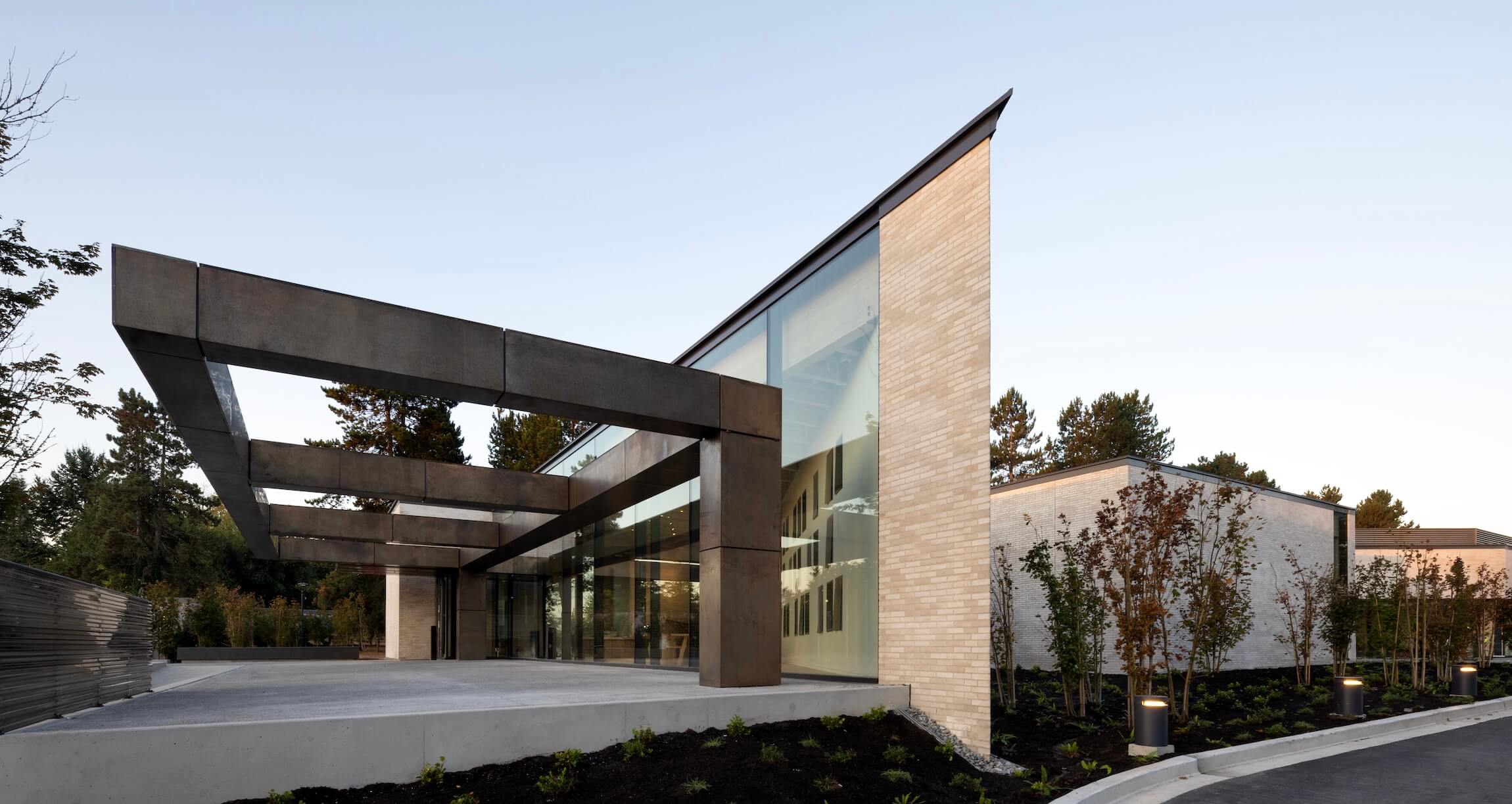
The irregular, angular form is already a dynamic campus presence. Triangular slices of galleries provide passersby a glimpse of the artwork — and even offices and meetings rooms — within. A similar effect greets visitors inside, as their gaze extends from galleries to towering pines and surrounding architecture. A large outdoor courtyard offers tables and chairs where students and faculty can gather and eat lunch.
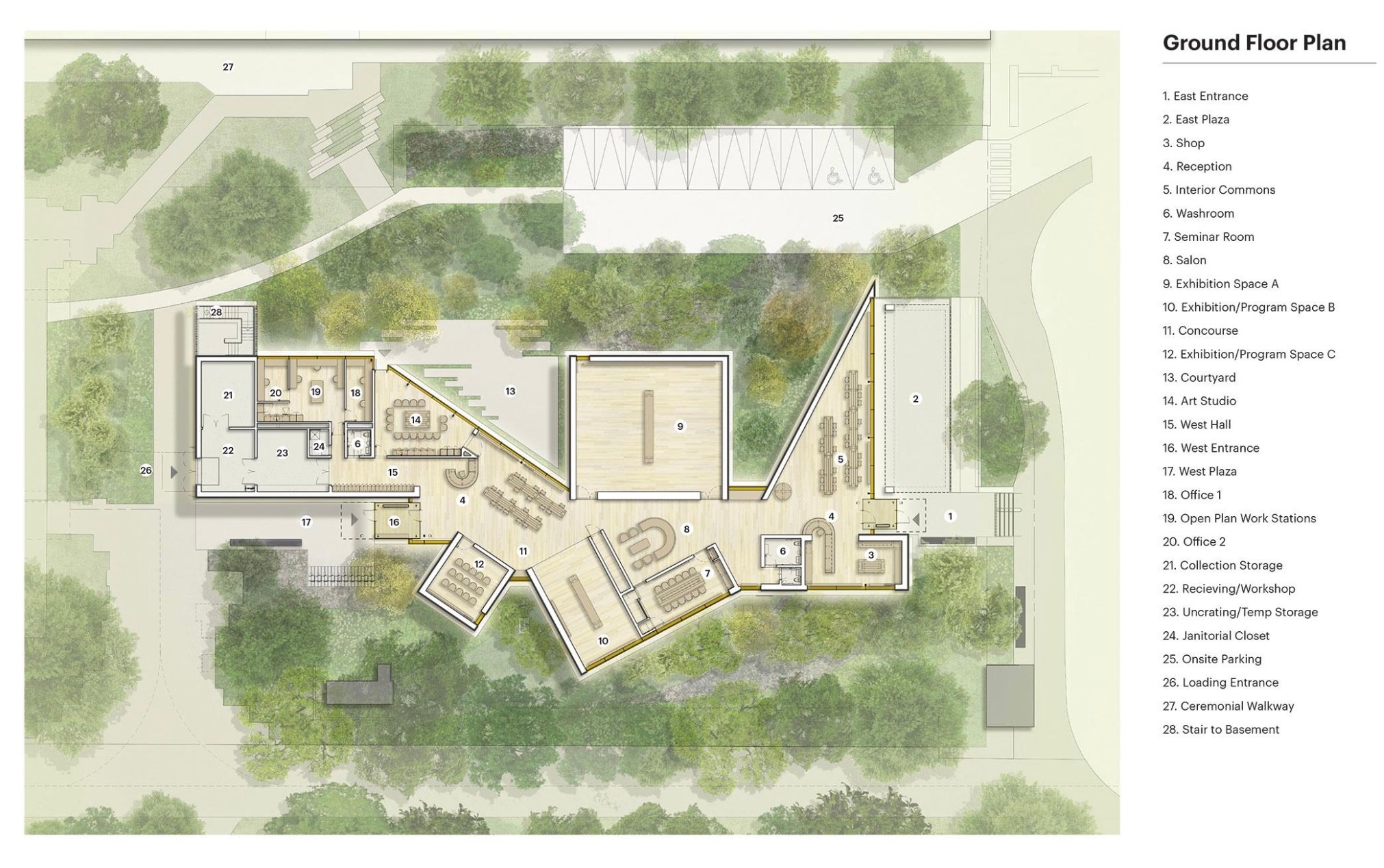
Inside, the fluid exhibition spaces are framed by a pair of entrances. At the east end, one entry fronts a new public plaza, delineated from its bus loop neighbour by a sculptural bronze frontispiece. Past the door, the interior opens up to a reception space and a interior commons that serves as the Gibson’s “great hall.” It is a dramatic, triangular room where art adorns one wall while tall, full-length windows bathe the space in sunlight. From the reception, a linear corridor all the way to the west entrance carves a pleasantly open sightline through the heart of the building, inviting informal daily circulation while breaking down internal hierarchies. For students, it’s an artful way to get to class.
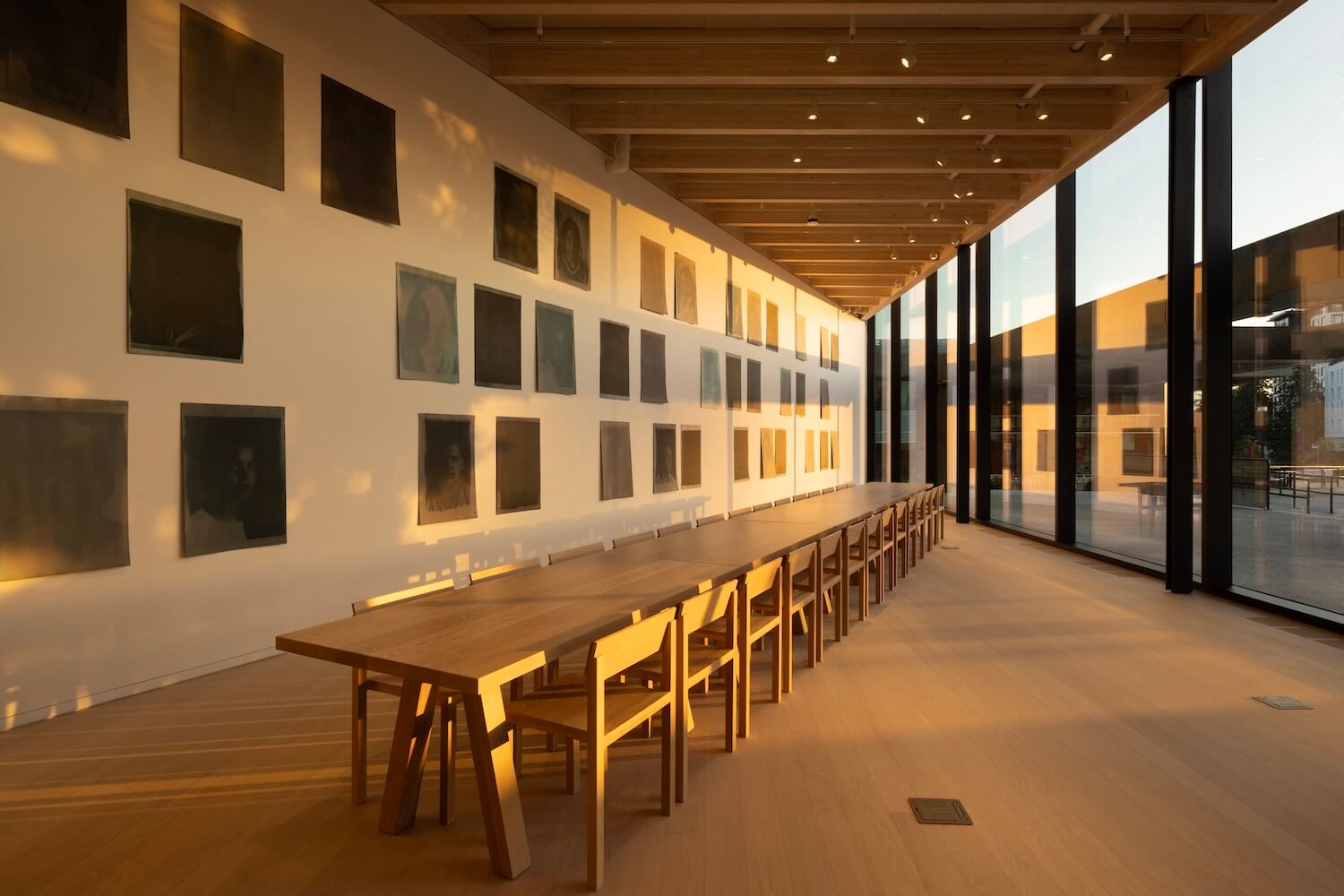
Walking past small side galleries, a compact museum shop, and a library, visitors are drawn into a central, hearth-like ambiance. A semi-permanent installation by Cindy Mochizuki called Arboreal Time channels Japanese forest spirits above a fireplace, while plush, inviting seating beckons passerby to slow down and take a closer look. It feels like a living room. Four formal galleries and program rooms surround the intimate central space, each of which can be closed to create light- and climate-controlled conditions as needed.
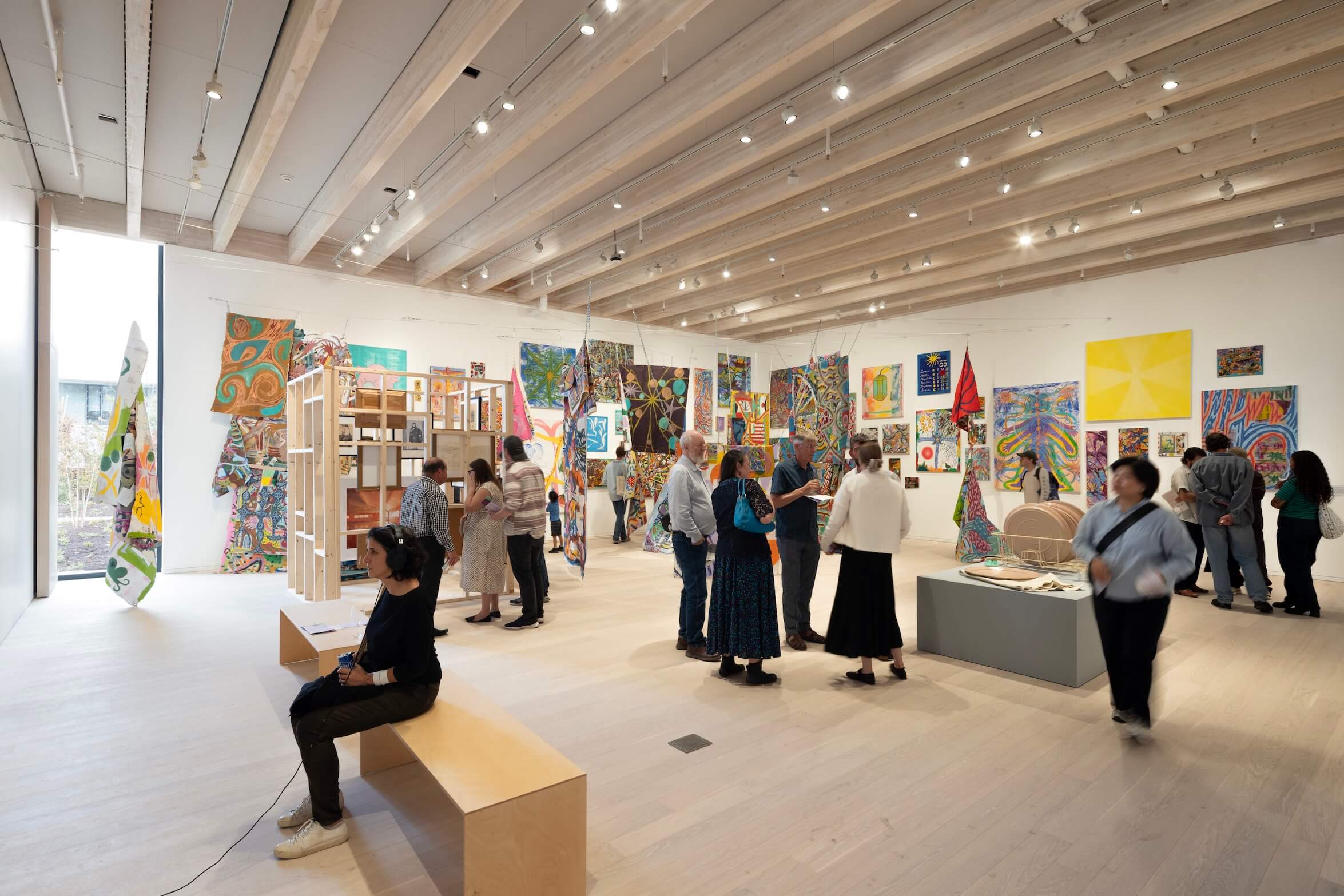
At the west end of the museum, a slightly smaller entrance and reception opens out to the campus — while the loading dock is discretely tucked to the side. Throughout the building, a series of well-choreographed geometries offer a sense of dynamic movement, and the use of elegantly thin buff brick provides a visually pleasing texture and contrast to the building’s wood body. Made from locally sourced mass timber beams, the structure is revealed in the rhythm of long exposed joists that cut across the ceilings.
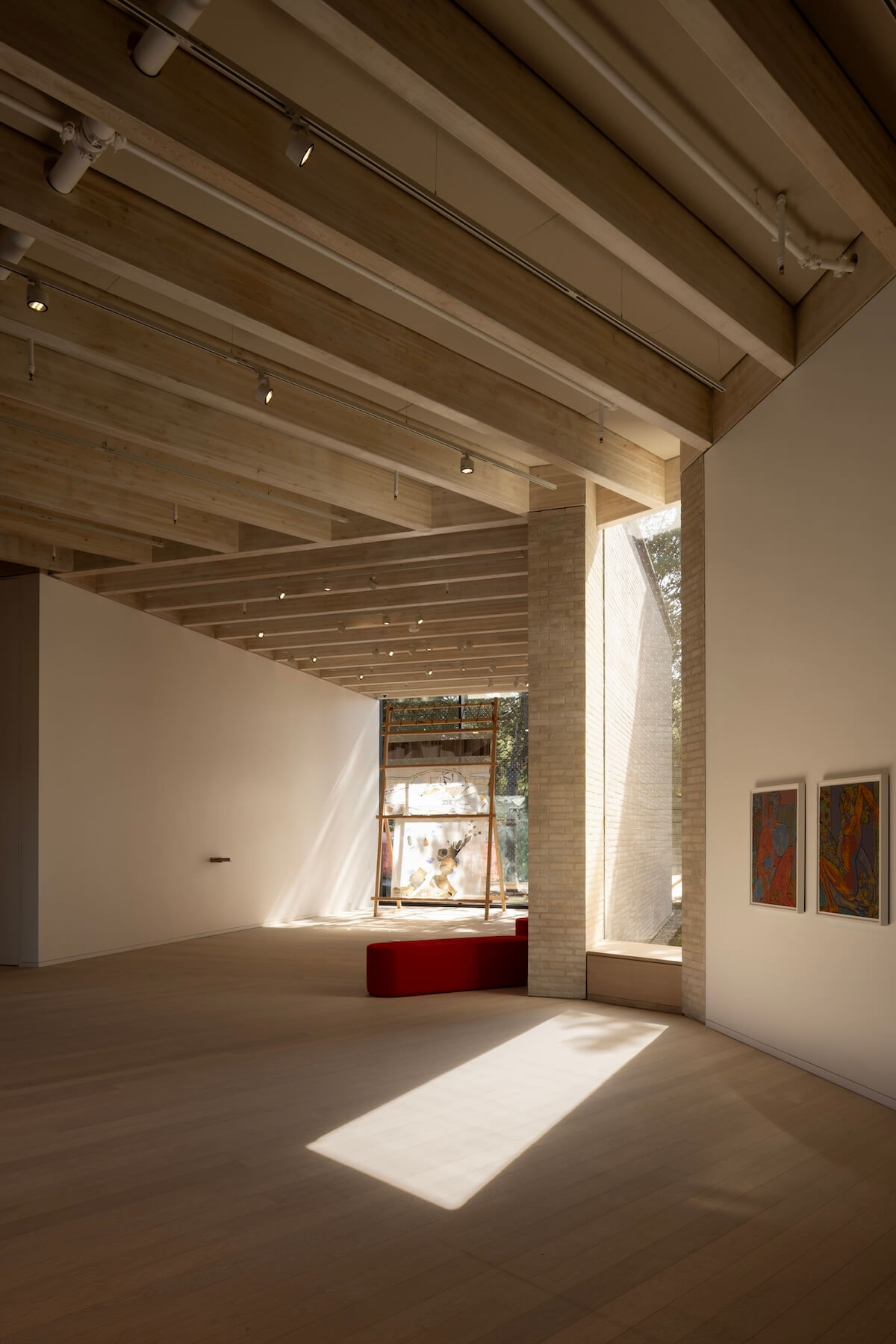
Thankfully, the Gibson also channels Erickson’s hymn to the horizontal, even extending a brotherly beam at the west entrance across to Strand Hall, the original Erickson building that houses the president’s office. Meanwhile, the textured brick frontage is a finely honed complement to the concrete that still defines the campus.
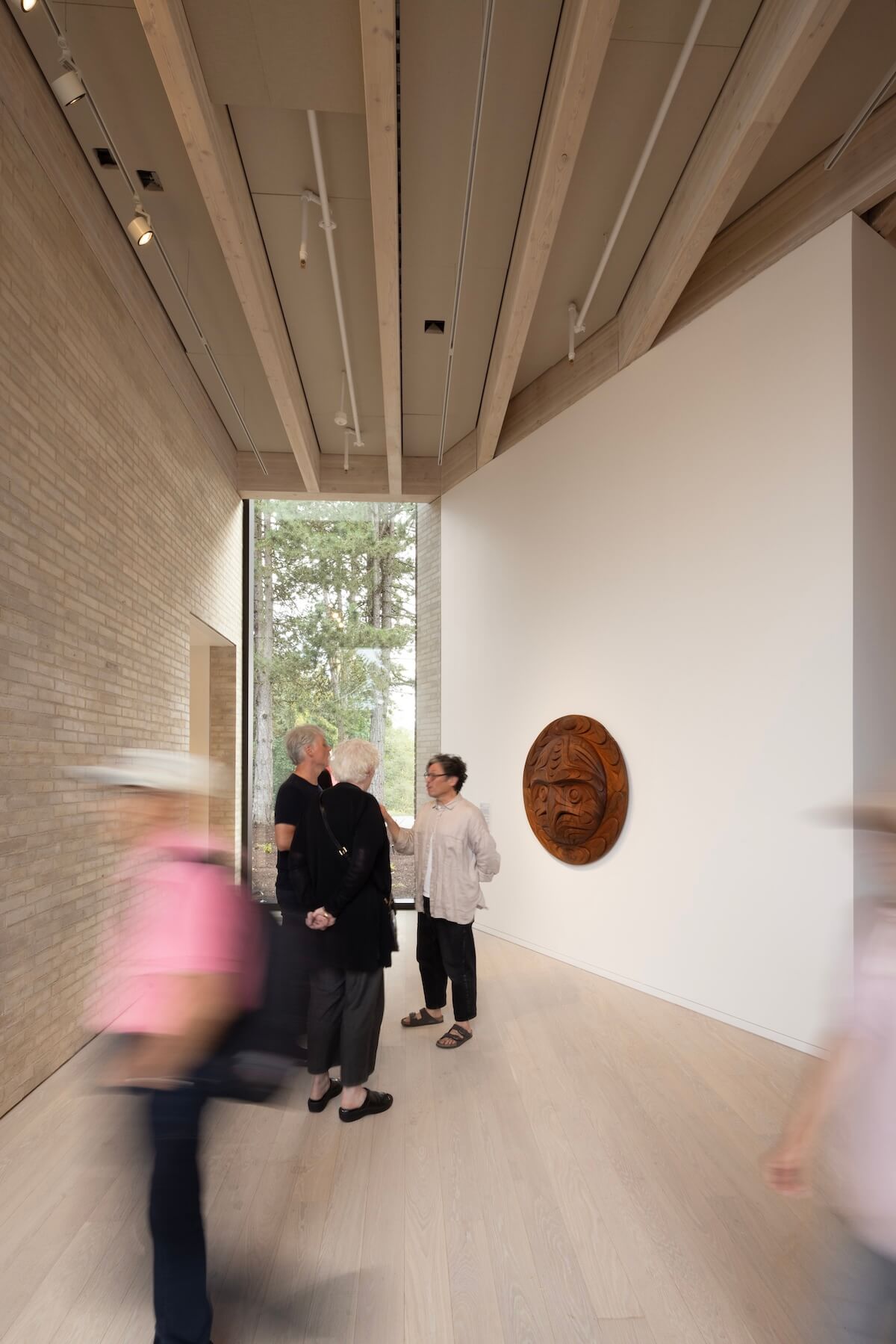
For all that, the result is a long way from brutalism. According to Hariri Pontarini co-founder Siamak Hariri, the concept for the Gibson Museum began as a “field of trees.” Paying homage to pre-contact Burnaby Mountain, he told a packed house at the September opening, “Imagine you come to the top of the mountain – the first thing you see is the trees. We carved out these spaces from the trees.”
The Gibson is not unlike a microcosm of the campus itself. Its long spine, like the school’s famed central mall, opens up into different learning spaces and galleries, with an embrace of trees replacing its canopy of steel. Its unassuming design and welcoming student friendly spaces stay true to the original Ericksonian concept of dissolving boundaries between disciplines and academic hierarchies. On a campus where some of Erickson’s original buildings have already been demolished, the Gibson Museum champions the school’s original architectural language while mediating a dialogue with the more recently constructed high-rise towers to the east.
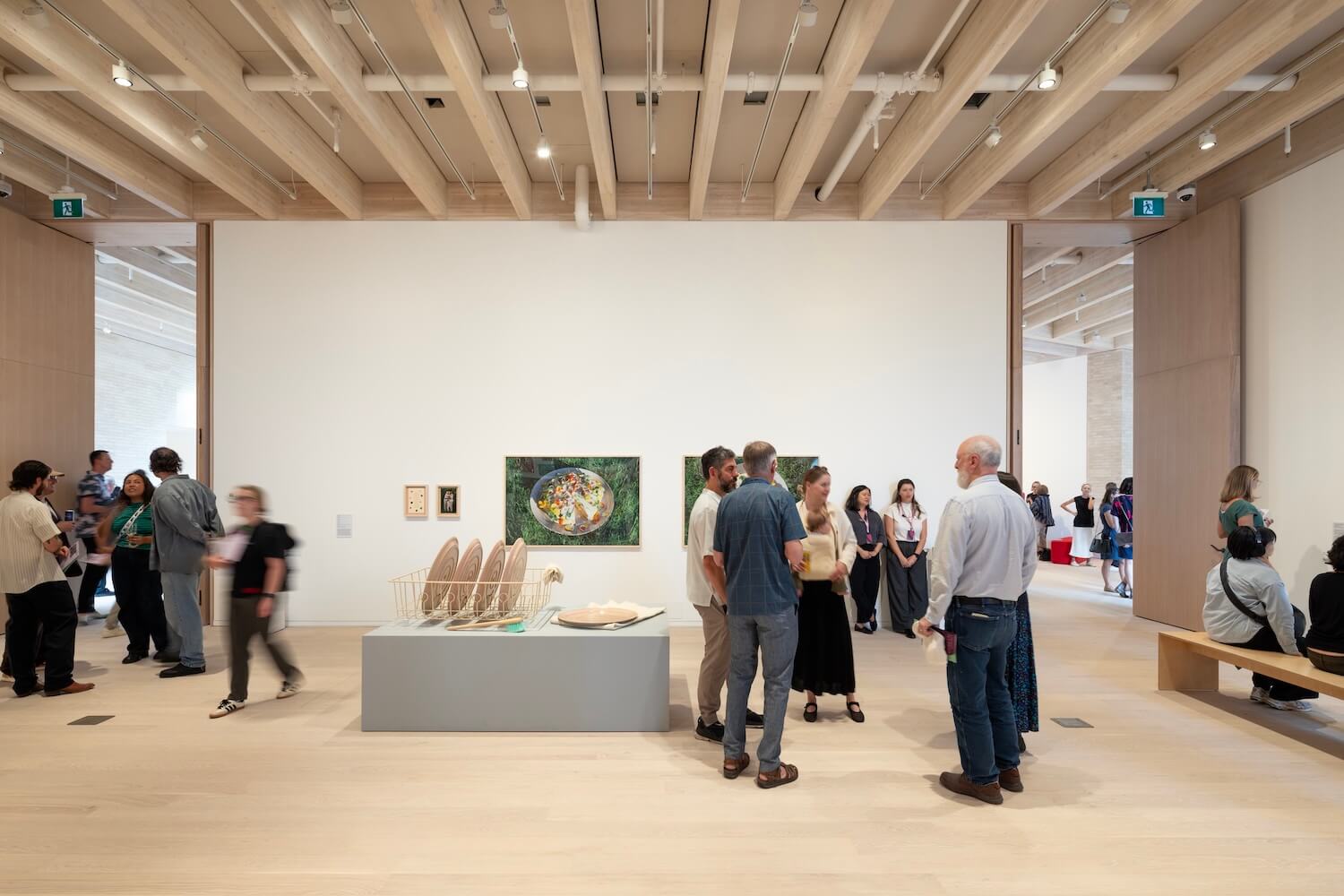
The beauty of the Gibson is in its modesty and respect for its surrounding natural and architectural environment. Whether the Gibson can mitigate the chaotic canopy of towers, housing and commercial buildings to the east remains to be seen, though another green space in front of the museum will replace an existing bus bay to complete the vision in a few years time. Once landscaped, the new plaza in front of the art museum’s east entrance could well become a new green academic quadrangle, destined to be the site of future ceremonies and performances.
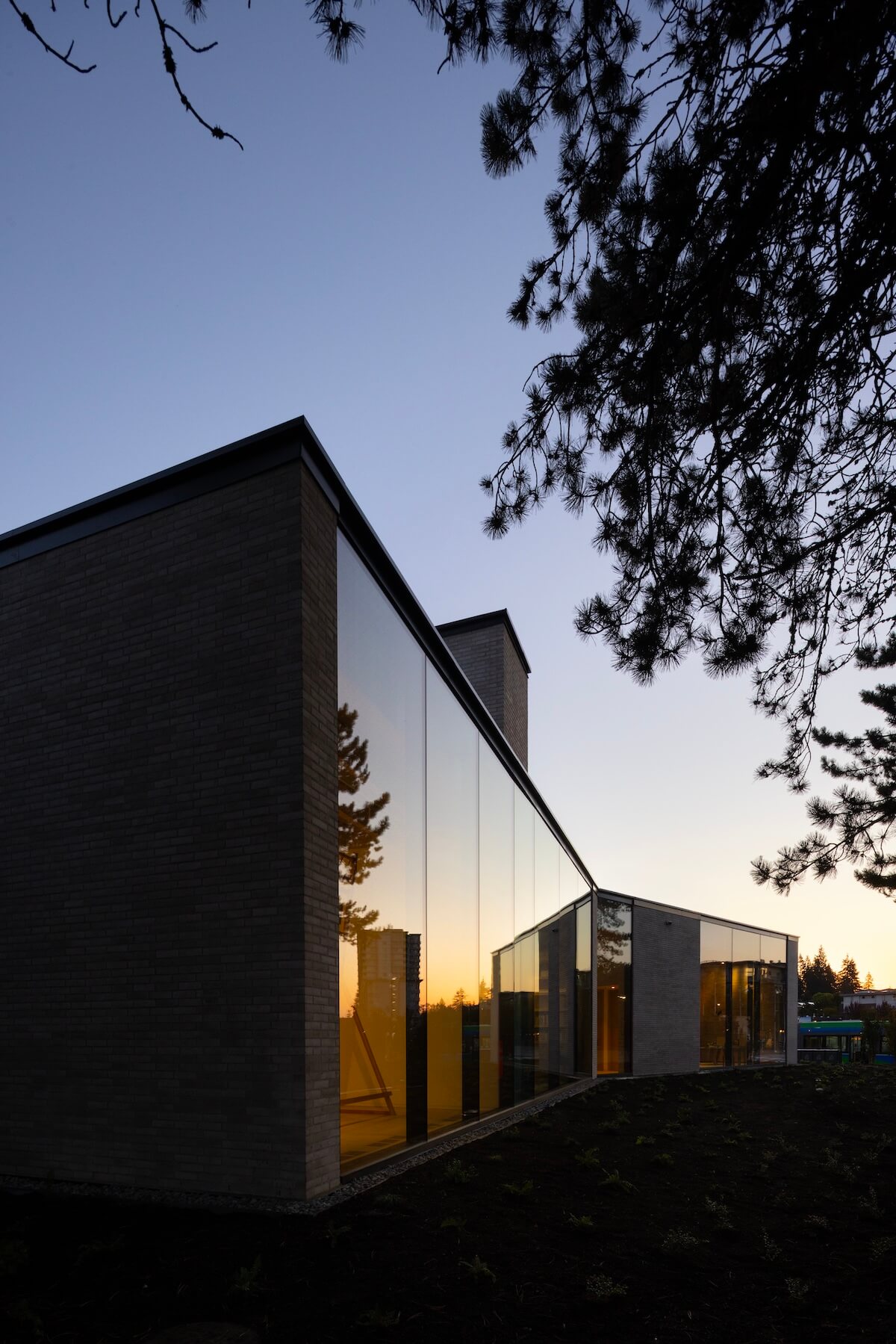
Completed at a budget of just $26 million and in a relatively crisp four years, the Gibson is also a welcome success story — and a contrast to the complex, drawn-out development saga that has shaped the future of the Vancouver Art Gallery. The final design, Hariri noted, was only possible due to the intervention of SFU president Joy Johnson, who lobbied for a doubling of size and budget. The happy result was summed up by Marianne Gibson herself, who, as recounted by the architect, told Hariri, “They said it would be a box, but you gave me a butterfly.”
Hariri Pontarini Designs a Museum Within the Trees
Burnaby’s Simon Fraser University welcomes a cultural hub that honours both the site’s Indigenous heritage and Arthur Erickson’s legendary campus.
